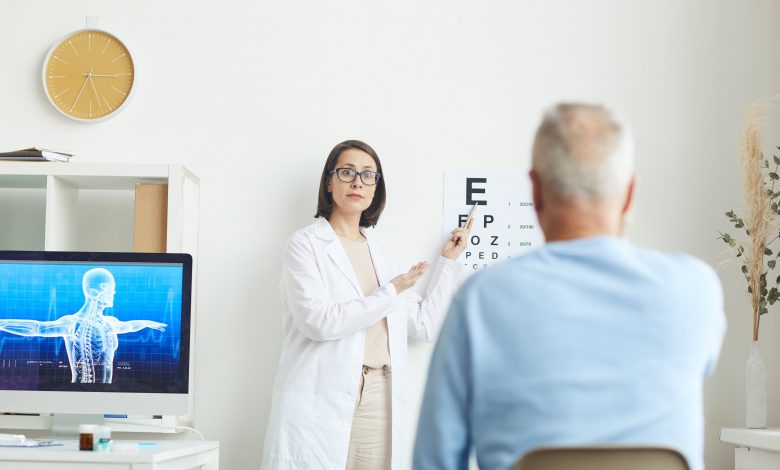Treatment for Low Vision At Low Vision Clinic

Low vision (sometimes called “partial sight”) is a type of visual impairment. It is not blindness, but it does make things difficult. It can be hard to see in the dark or clearly over long distances. Poor night vision and blurry sight are common symptoms. The most common causes are age-related macular degeneration, glaucoma, and diabetes. There are many types of visual aids available at low vision clinic for those with visual impairment.
What is low vision?
Low vision is defined as a loss of sight that is not correctible with prescription eyeglasses, contact lenses, or surgery. Some people can live with visual impairment and others cannot. A person may still be able to see some things and it may be possible to enhance their vision with the use of eyeglasses, contact lenses, surgery, or visual aids.
Visual impairment is a catch-all term for a range of vision-related problems, from blindness to night visuals and glare issues. The American Optometric Association (AOA) defines two types of visual impairment:
“Partially sighted” means the person can see up to 20/200 with a prescription or a restricted field of vision of less than 20 degrees wide.
“Legally blind” means the person can only see up to 20/200 without any prescription and has a limited field of vision less than 20 degrees wide.
Visual acuity is the sharpness of vision, or how clearly a person can see. For example, if a person has 20/70 vision, that means they need to be within 20 feet of an object to see what a person with normal vision can see at 70 feet.
Risk of having low vision
Visual impairment can happen for many reasons, including age-related disorders like macular degeneration and glaucoma. Visual impairment is more common in adults over age 45 (approximately one in six) and even more common in adults over age 75 (approximately one in four). For example, there are lots of adults aged 45 or older with visual impairment, and many of them are over the age of 75.
There are many types of visual impairment, which include:
- Loss of central vision: You may have a blind spot in the center of your vision.
- Loss of peripheral (side) vision: You may not be able to see anything to either side, above, or below eye level. However, your central vision remains unaffected.
- Night blindness: You may have difficulty seeing in poorly lit areas such as theaters, at night, or outside.
- Blurred vision: Objects appear to be fuzzy and out of focus.
- Hazy vision: Objects in the field of view appear cloudy and unclear.
Causes
Visual impairment is a result of a disorder or injury affecting the eye. There are many different causes and one of the most common is age-related macular degeneration. Diabetes and glaucoma can also result in visual impairment, as well as a disorder that affects the whole body – such as diabetes – which can affect at least one of your eyes.
Visual impairment can result from a number of health conditions, such as cancer, albinism, and inherited eye disorders. If you have a visual impairment, you are also at greater risk for these disorders.
Medical solutions of visual impairment
Low vision is a broad term that includes any visual impairment that occurs when the eye disease is not curable. There are many causes of visual impairment including wet macular degeneration, cataracts, and glaucoma. Treatment for visual impairment depends on the underlying eye disease and the severity of their condition.
Wet AMD can be an ocular disease that develops over time, but it is possible to treat and even prevent further vision loss with injectable medicines. Physicians can prescribe these medicines, and they can either work well enough to improve vision or to simply prevent any future damage.
Cataract surgery has been proven to replace cloudy lenses with intra-ocular lenses, which is the only treatment that will replace the eye’s clarity.
Glaucoma is caught early enough, prescription eye drops are often enough to treat the condition.
Visual impairment is a condition characterized by a decrease in eyesight. Surgery and medication are two of the main, though not always effective, treatments. Unfortunately, for those with untreatable eye diseases, there is no other solution but to turn to low vision aids.
Low Vision Aids
There are many ways that people with visual impairment can continue to lead fulfilling lives. For those with visual impairment, enlarging and brightening objects can help. Other low vision devices use sound or help people to rely on their auditory senses more. Another way for them to stay independent is to rearrange their surroundings at work and at home.
Those with visual impairment can always carry a penlight on them. This will help with reading and provide relief from glare. Physicians recommend that patients cover all shiny surfaces in their homes to reduce the glare. They also recommend wearing sun visors and dark sunglasses to protect their eyes from bright outdoor light.
Many people with visual impairment are not able to read or see things easily. Fortunately, there are some ways to help them. Some popular visual aids are telescopic glasses, light filtering lenses, magnifying glasses, hand magnifiers, closed-circuit television, reading prisms, and more.



